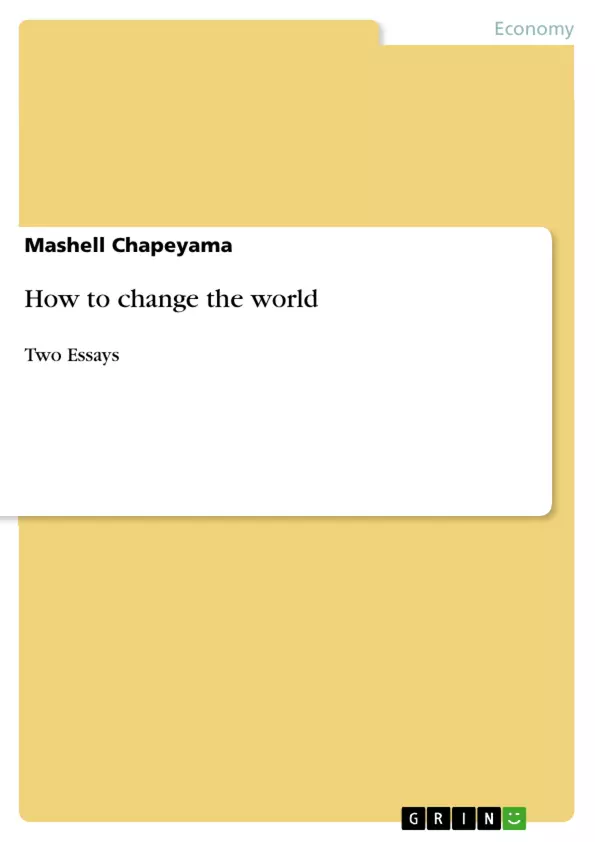The two essays concentrate on ways in which people can assist to in improving the conditions of living of the people around the world, irrespective of whom we are or who they are. There a number of changes that are necessary to achieve that, including the need to have paradigm shifts in all spheres of life, such as in education, political, social and economic systems. People need to adopt new perspective to challenge the current economic distribution, as well as social dispensation. Apart from dealing with many inequalities, the second essay focuses particularly on how to fight poverty on a global scale.
Inhaltsverzeichnis (Table of Contents)
- Introduction
- Dedication
- Essay 1:
- How to change the world
- Essay 2:
- Poverty Reduction in the world
Zielsetzung und Themenschwerpunkte (Objectives and Key Themes)
This book explores the concept of social entrepreneurship and its role in achieving global improvement. It aims to demonstrate how individuals and organizations can utilize entrepreneurial principles to address social and environmental problems, ultimately creating a more equitable and sustainable world.
- Social entrepreneurship as a tool for change
- The impact of social innovation on communities and individuals
- The importance of corporate social responsibility in addressing social problems
- The role of social venture capital in funding social change initiatives
- The significance of caring and concern in driving social entrepreneurship
Zusammenfassung der Kapitel (Chapter Summaries)
The first essay, "How to Change the World", delves into the concept of social entrepreneurship, exploring its role in addressing social problems such as poverty, disease, and lack of education. The essay examines how planned change can lead to positive social impact, highlighting the importance of social innovation and its ability to transform communities. Examples of social entrepreneurship, such as the emergence of distance education and the creation of trust funds for child-headed families, are presented to illustrate the practical applications of this approach.
Schlüsselwörter (Keywords)
The core concepts explored in this book include social entrepreneurship, social innovation, corporate social responsibility, social venture capital, poverty reduction, global change, and community development.
- Quote paper
- Mashell Chapeyama (Author), 2010, How to change the world, Munich, GRIN Verlag, https://www.grin.com/document/174283



